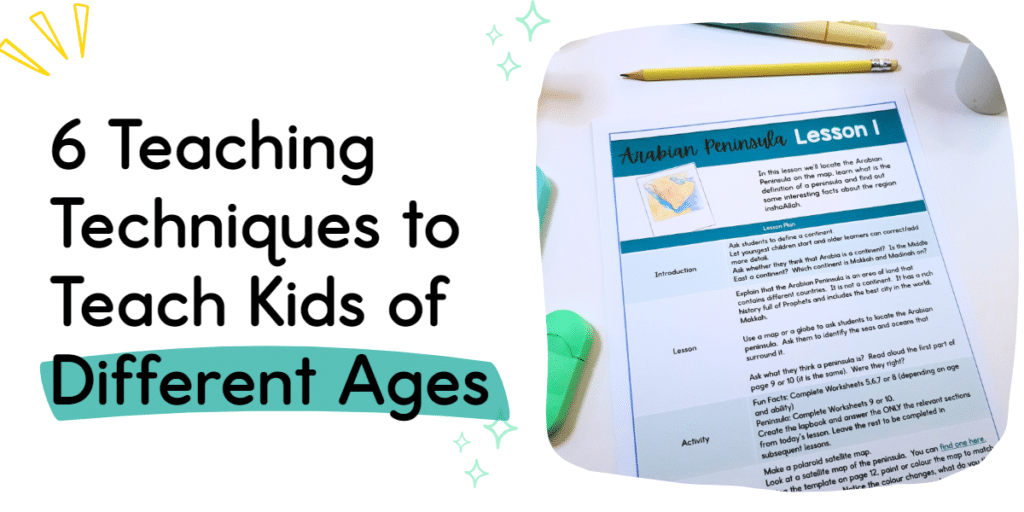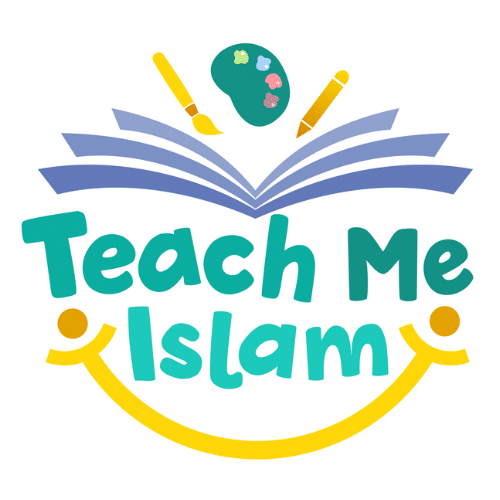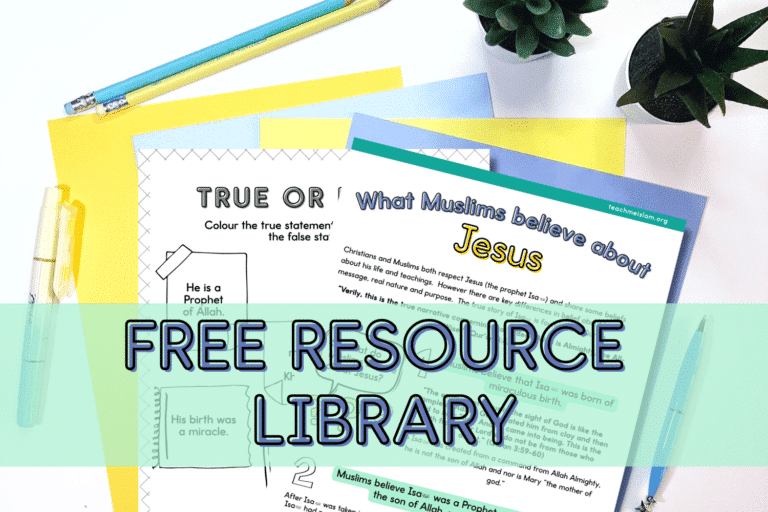Why do you need use these teaching techniques in your Muslim homeschool? Have you ever felt yourself being pulled in 5 different directions at once? If you homeschool…if you have kids, I’m sure you can relate. Teaching one kid is a big responsibility, teaching several is a challenge and when they are different ages it’s a whole other story. Alhamdulillah it’s a joy and it’s worth it but it takes organisation and there sometimes doesn’t feel like there is enough time to get it all done.
Islamic studies is a subject that all your kids are learning but their different levels of comprehension can make it tempting to teach them all separately. Depending on the number of kids though, this can quickly become impractical. So what’s the solution? Teaching them all together but in a way that they can all benefit. Too good to be true? Here’s a list of 6 different tried and tested teaching techniques you can implement in your homeschool lessons to engage all your kids inshaAllah. May Allah place barakah in our time!
Personalise your learning aims.
When your child has a writing lesson they will have certain learning objectives which will differ wildly with age. Your four year old may be aiming to form letters correctly and spell simple words, your six year old may be learning about simple punctuation and your twelve year old may be trying to create different forms of writing. The point is, one lesson but very different aims and the same is true for Islamic Studies. When studying seerah, a younger child may just be trying to learn the main events of the Prophet’s life (may Allah raise his rank and grant him peace) whereas an older child may be learning a more detailed timeline and deducing characteristics such as generosity and bravery from the Prophet’s actions.
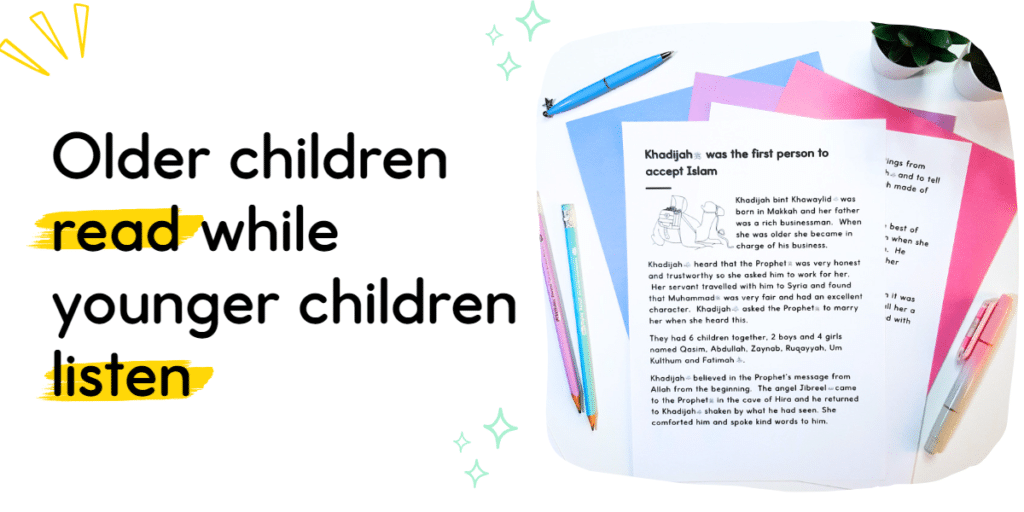
One lesson – different participation
In this teaching technique the topic of the lesson may be the same for all the kids but how they interact with that material can differ. You can ask your older child to read aloud and ask your younger kids to listen carefully. You can ask one child to contribute what they have already learnt about the topic and another to repeat something carefully after you. Asking older children to read text aloud is great because it has the added benefit of making it more interesting for younger kids. A variety of readers aids understanding as they naturally emphasise different words and use different tones.
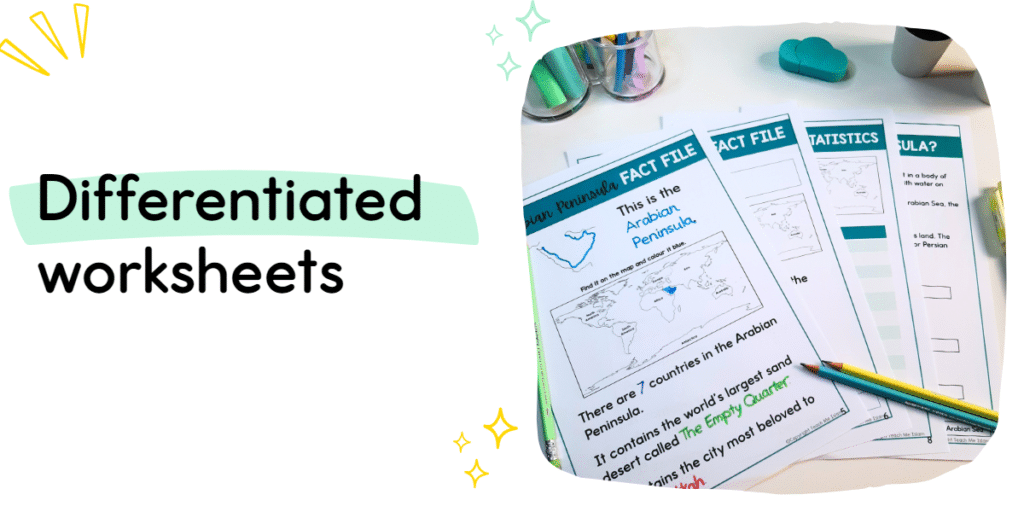
Differentiation Teaching Technique
Differentiation is a teaching technique similar to different participation, but it happens after the instruction period of the lesson. These activities are generally completed independently and they give a real opportunity to tailor the activity to each child. A good example is in the Makkah and Madinah virtual field trips. All the kids interact with the presentation together but the worksheets and activities are very different. They vary from simple colouring and tracing worksheets to annotated personal google maps and podcasts.
Differentiation doesn’t just have to be about age and ability it can also include interests. If you have an artistic child, ask them to make a poster or leaflet showing what they have learnt. Maths loving kids can make a page of statistics. The possibilities are so vast and it’s a blessing to be able to give kids the opportunity to study and learn in a way they find engaging and enjoy. Differentiation is one of those teaching techniques that sometimes takes planning and forethought but it definitely worth it.
Extension activities.
Extension activities are a teaching technique that offers the chance for kids to extend their learning further. Like differentiation this can be an opportunity for kids to learn in the ways they enjoy but it can also mean they can explore topics further. One child might like to learn more about ajwa dates from Madinah, whereas another might like to learn about the different battles that took place near Madinah. In the Africa and Islam Unit Study, older kids had the challenge of memorising all 54 African countries where as the younger kids had a set of compass games to play to learn the different directions.
Scaffolding Teaching Technique
Scaffolding is a teaching technique where students do the same activity but with different levels of support. An example of this is the Abu Bakr Flipbook freebie that you may have already received. If not, grab your copy here. The flipbook is fundamentally the same, it contains the same topics but the amount of structure and help varies. Younger kids need to fill in blanks but for older kids, it is essentially blank, enabling them to research and compose their own summary. This teaching technique is often used in classrooms where students have worksheets that are similar but different to cater to the range of abilities. It helps everyone to feel that they are working on the same project but they are still challenged enough to make it interesting and beneficial.
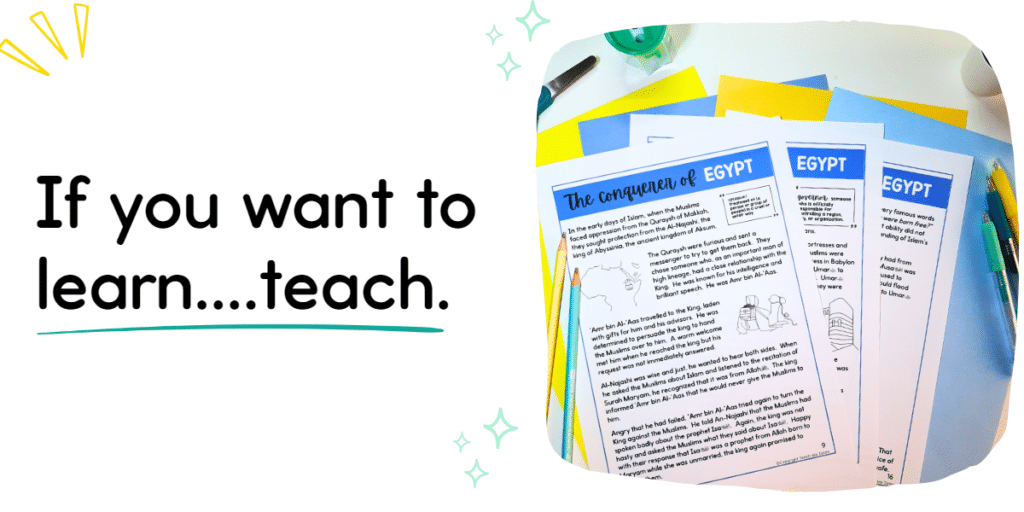
Older kids help the younger kids.
This option is great for homeschool! It gives older children a chance to take responsibility and earn respect. They feel useful and learn how to communicate effectively with children of different ages. There is also that old adage that if you really want to learn something, you should teach it. In addition, when they are teaching something, and face the usual challenges of teaching such as inattentive students, the need for patience, difficulty finding the right words to explain, it builds empathy for their teachers (you!) and helps them become better students.
Younger children also benefit from this arrangement as older siblings often explain in a different way and with simpler vocabulary. It also helps foster respect for the elder sibling. Plus it is a change from the usual and variation builds interest.
Download a free summary of the teaching techniques.
If you would like a free pdf summary of the above points plus a copy of the Abu Bakr As-Siddiq (may Allah be pleased with him) flipbook, then please click here.
Find resources mentioned in this blogpost :
Makkah and Madinah Virtual Field Trips
Find blog posts you may be interested in here:
7 surprising ways they teach Islamic Studies in Muslim countries
What are Islamic Comprehension Passages and why you should be using them

